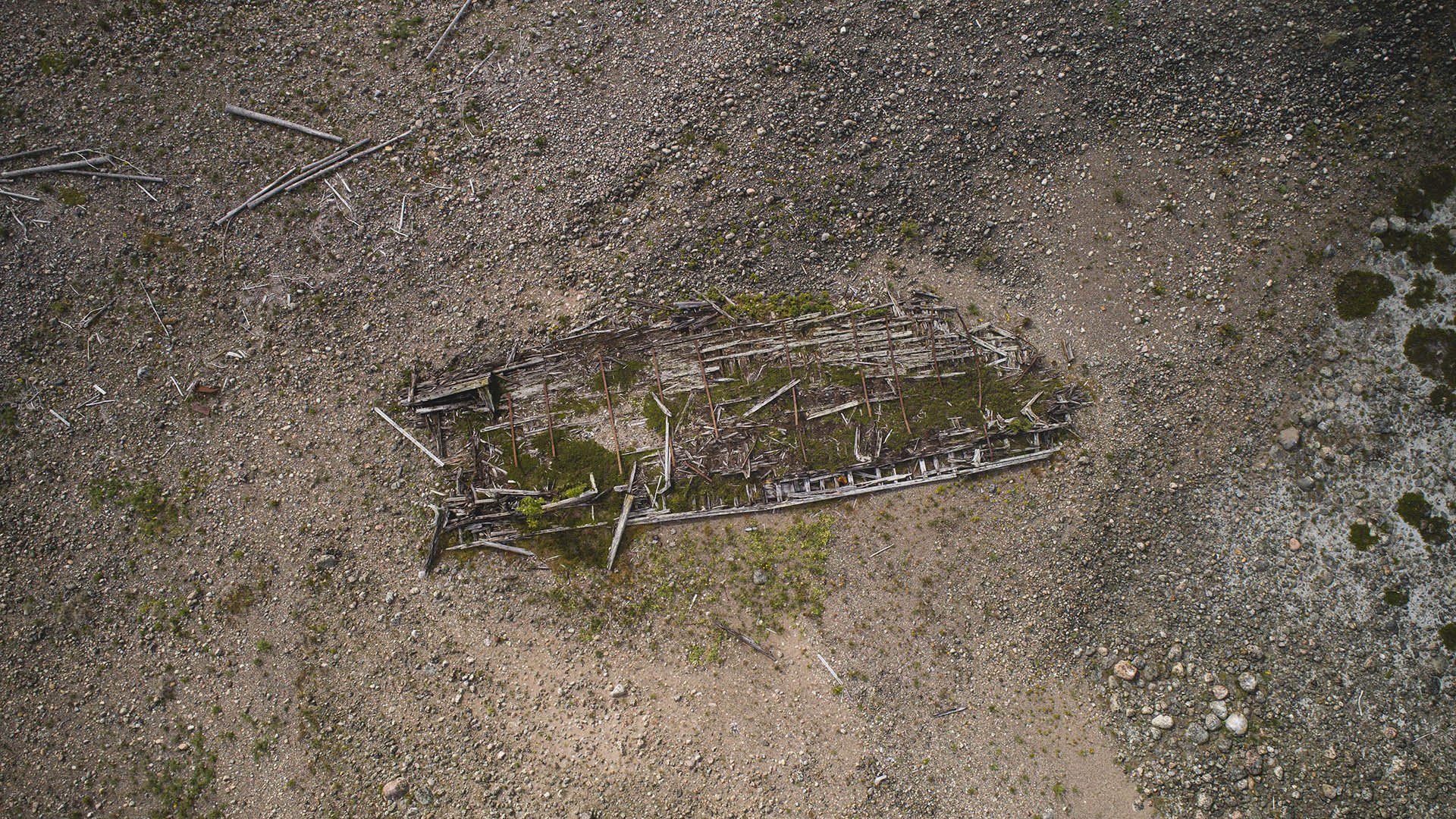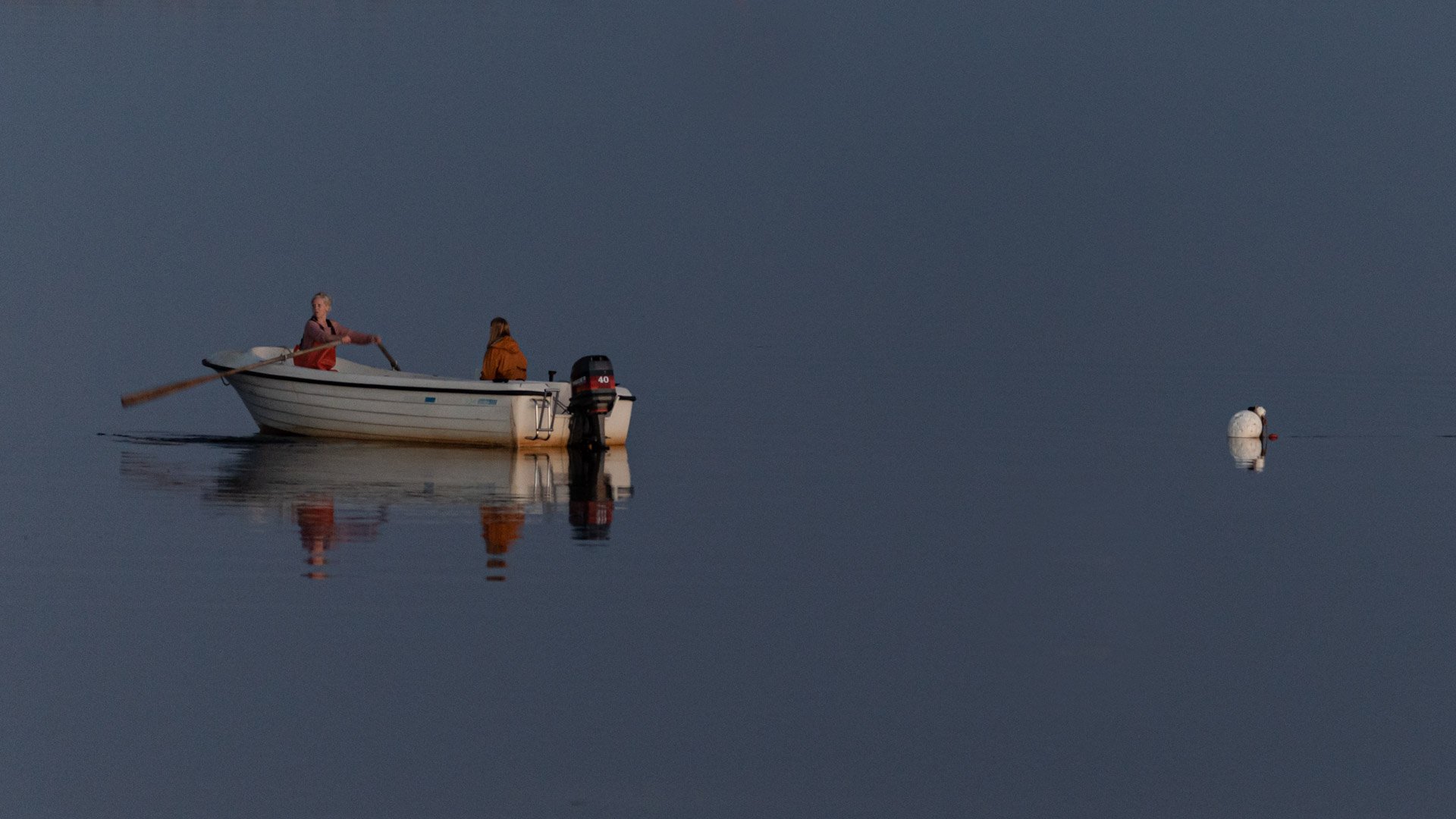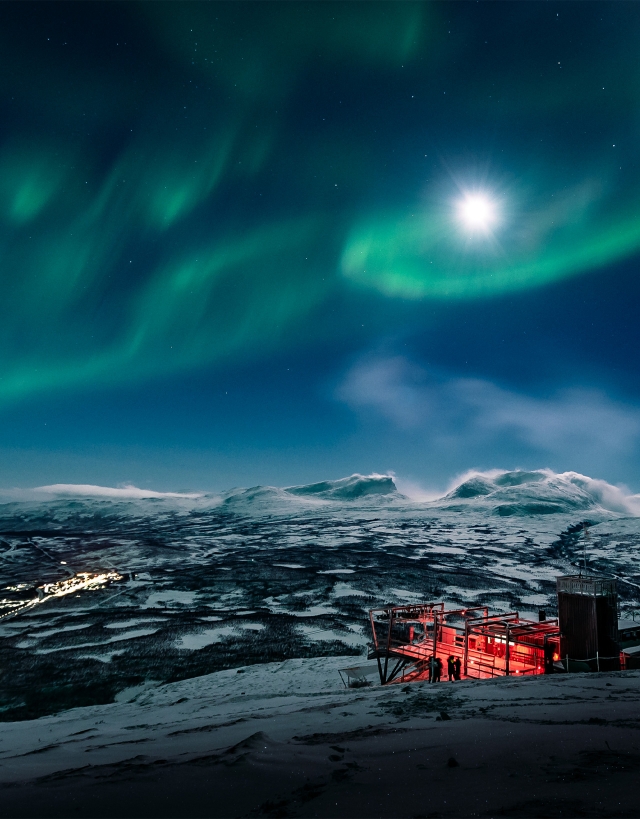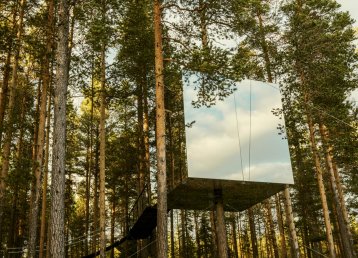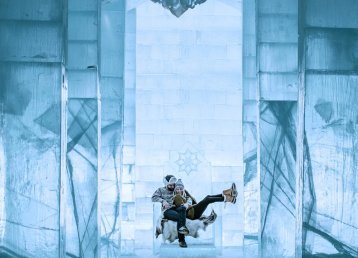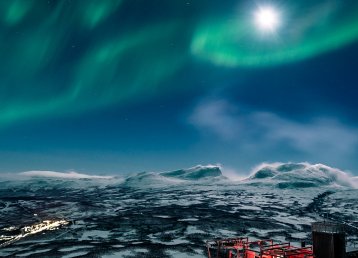No one knows exactly when the island Malören rose from the sea. Given the speed of post-glacial rebound in the Bothnian Bay archipelago, it should have been a thousand years ago, give and take a few hundred years. But ever since the Middle Ages, fishers and seal hunters have gathered out here on the island. The availability and proximity of good herring and vendace fishing made the island’s location ideal – provided that the weather cooperated, of course.
In the church, that was first timbered on the mainland in 1769 and then brought over by boat there are several carvings from the 18th century. Graffiti is nothing new; only the spray cans are. Our desire to tell others that “Kilroy was here”, placing our trademark on things, has stayed the same. What was carved with a knife in this church on Malören in 1772 was made with the same urge that steered the hands telling stories in Cueva de las Manos in Patagonia. Cave paintings that are 9,000 years old and 250-year-old knife carvings tell the same story of being alive. There is actually a cathedral spire mounted on this island church, and it is therefore sometimes referred to as the ‘archipelago cathedral’. It is a special place in every way.
In the outskirts
We are on our way out on the Bothnian Bay – beyond the horizon in fact – on a perfect summer day in August. We are on our way to the very outskirts of the archipelago. From the sky, Malören looks almost like a Pacific atoll, but instead of sand and mangroves, it is rounded pebbles and sand ryegrass keeping this ‘atoll’ together. Malör is actually an old Swedish word for round stones. On a stroll around the island, you will definitely understand how its name came about. Most of the island is a boulder ridge, but there is a lovely sandy beach on the north-east side: a result of the eternal, repetitive work of waves and pebbles, Sisyphus labour. Over the years, the vegetation on the island has become richer. Wild strawberries appear some years when it is not too sunny and dry. Our guide Henrik tells us that this year you could not step off the path because your shoes would turn pink. There are also wild raspberry bushes trying to grow bigger, but they rarely reach a height of more than half a metre.
For all nature lovers, it is the bird watching that is special about this place. Barnacle goose, Arctic skua, ruddy turnstone and ringed plover are commonly spotted. So are Arctic tern, common tern and little tern. The Arctic tern is one of the world’s long-distance birds and a real character in the Arctic environment. During the migratory periods in spring and autumn, Malören is a wonderful place as many of the northern migratory birds choose this place for a bit of a rest before facing the Baltic Sea or the last part of the trip.
The old pilot’s cottage
The boat trip with skipper Patrik Engström takes about an hour from the guest harbour at Karlsborg north of Kalix. The sea is completely calm this August afternoon. But since Malören lies as far out as you can get in the archipelago, you always have to factor in the weather. Patrik says that so far this summer he has only cancelled two days due to the weather. So, it has been a good summer. As skipper, and during a summer like this, he will log around 3,000 nautical miles on the trips back and forth between the mainland and Malören. That is roughly equivalent to crossing the Atlantic if he would rather.
Patrik grew up here in Kalix, and the sea is nothing new or foreign to him. Some 20 years ago he bought a cottage on Malören with his wife Hanna, and a few years ago they started thinking about doing something with the empty pilot’s cottage. Today they run Malören Lodge, a refuge for those wanting to experience a different world.
— We have seven rooms and a suite in the now renovated pilot’s cottage. Guests can bring their own food; there is a barbecue, and the kitchen is large and spacious.
— But you can also order food through us, of course, says Hanna.
Land elevation
Malören is approximately 0.5 square kilometres in size. Cottages are lined up on land by the bay that gives the island its slightly horseshoe-shaped character, and a distinctive pier extends into the bay, receiving boats. Getting close to the pier is tricky, and best done at slow speed. The land uplift that shaped the island – a mere moment ago in geological terms – is still an active event. The continuous elevation means the pier is increasingly difficult to approach at low tide. It is a fact of life that archipelago residents in the Bothnian Bay have always lived with. But it is a real problem for the cottage owners here, and the people who run the lodge. At some point in the future, the pier has to be extended, or the bay will have to be dug out.
At some point in the future, the pier has to be extended, or the bay will have to be dug out.
Four directions
Who comes here? Well, those who own cottages here of course, who have come here for generations. But as for visitors to the pilot’s cottage, Malören Lodge, it varies. Many come here because of the location: the fact that it is the outer limit, the most remote island in the furthest part of the archipelago, and another thing to tick off on the bucket list. Been there, done that – still something we all think about.
The boat trip to the island with Patrik, really gives you a feeling of Mare Tenebrosum, The Sea of Darkness, where the end is unknown. It is a strange feeling, not that easy to explain to flat-earthers when two tiny pillars suddenly rise from the horizon. They will later turn out to belong to the island’s most famous buildings: the church and the lighthouse. The rounding of the Earth will also give you the opportunity to have an exciting experience. From the suite at the lodge, not only do you get a view of the sea in four directions, but you can also see the sun both rising from and setting in the sea from here. This is not a common thing in Sweden. Not anywhere else either, for that matter. Probably that is the reason why most people come here. They want to enjoy the eternal light of summer, and the tranquillity of nature.
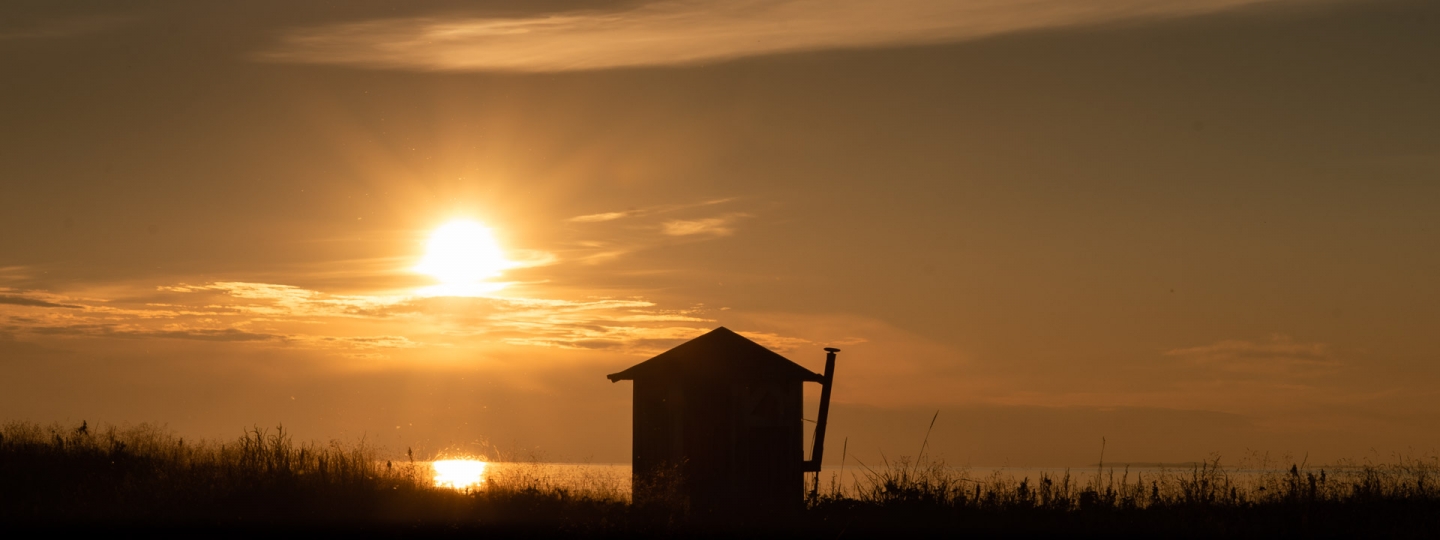
The tranquillity of nature
All visitors want to enjoy the eternal light of summer.
The church and the lighthouse
A sea mark was placed on the island as early as 1725, and nearly a hundred years later, in 1823, a beacon. As mentioned earlier, the church was timbered in 1769. 1827 Malören became a pilot site, and in 1851 the beautiful lighthouse was built on the island. The architect and lighthouse engineer was Gustav von Heidenstam, who later became known for his Heidenstam lighthouses, known in Sweden as ‘Heidenstammare’. He was perhaps known through his son Werner as well, who in a way created the Swedish cultural genre ‘the 1890s’ and ended up in the Swedish Academy thanks to his bombastic rebellion against realism. But before that, his father Gustav had been commissioned to make shipping in Sweden safer, by building lighthouses where needed. After timbering the beautiful lighthouse on Malören, he realised it would take a faster approach, and created his classic, assembled Heidenstammare using galvanized sheet metal. Today three out of eleven Heidenstammare are found within the destination Swedish Lapland, along the Bothnian Bay archipelago. The one in Jävre is the easiest to reach, just by the harbour near route E4, and the one on Pite-Rönnskär can easily be reached by tour boat, but the one on Rödkallen in Luleå requires a private boat. But enough about other places. Back to Malören.
Naturally exclusive
The afternoon offers sun and tranquillity. It feels so nice to just lie down on the beach and breathe. In the evening there is a wondrous calm. Everything is still; the wind ceases, and the sea kayaks come in handy. Last week there was a group here for a yoga retreat, and it isn’t easy to imagine a place where you can slow down more than on an island far out at sea. The weather is changeable of course, but since this summer day is right off the page of a tourist brochure, just go ahead: help yourself! Asking where the perch that guide Henrik Blom has just cooked for dinner were caught, he just points. It is difficult to eat more locally produced food than this, with someone pointing straight from the kitchen to the place where the nets were placed, and the fish was caught. The starter was Kalix Löjrom on flatbread, and the drink is made from those wild strawberries that grew in abundance on the island this summer. Everything is so simple and at the same time to naturally exclusive on Malören, the island hiding behind the horizon.
Learn more
Malören is a nature reserve located furthest out of the archipelago in the Bothnian Bay. To find out more about the accommodation Malören Lodge, and to make a reservation, go to maloren.se.


















